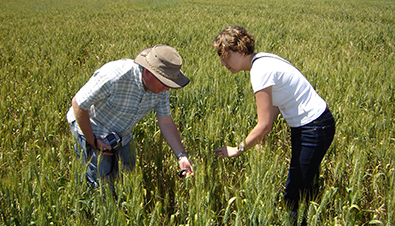

When a frog or salamander encounters it, he walks the length of the metal barrier, searching for a way around. Jim set up this drift fence many years ago to survey amphibians migrating to and from the wetland. We make our way among the flowers, toward a 100-foot-long sheet of aluminum flashing, fastened to wooden stakes, that forms a foot-high wall between us and the wetland. It’s mid-April in this forest, and Dutchman’s breeches, hepatica, bloodroot, and spring beauties embroider the brown humus with knots of yellow, white, purple, and pink, under a leafless canopy of shagbark hickory, white ash, sugar maple, and oaks.Ĭhecking for amphibians in the pitfall traps along the drift fence.
PITFALL TRAP DATASHEET FULL
A full two years later, we’re picking up where we left off.Īfter we finish our show-and-tell of the beings we discovered by turning cover, we crest the hill and drop toward a wide wetland. We had just finished the indoor lecture portion of the course when the Covid pandemic took hold, so Jim postponed the three spring field trips. Jim started teaching this 23-hour course, Conserving Vermont’s Amphibians, through Vermont Family Forests’ Hogback Community College back in February of 2020. This field trip has been a long time coming. By the time Jim whistles us back 20 minutes later, my group has found seven red-backed salamanders and, in a surprise coup, a gray snake the length of my forearm and thin as a pencil, which Ira pegs as a DeKay’s brown snake. Ira, one of my group mates, and I roll back another big rock that looks promising and, bonanza! A red-backed salamander gleams like a twisted cord on the soil. Not an amphibian, of course, but a mighty sweet find in the leaf litter. On this dry, rocky hillside, I need big, juicy cover to get the moisture I need.ĭeKay’s brown snake.
PITFALL TRAP DATASHEET SKIN
Instead, I breathe through my skin, and that can only happen if my skin is moist. If I’m a red-backed salamander-a species Jim says we’re likely to see since they’re common terrestrial forest-dwellers-I don’t have lungs. They’re under logs and rocks because that’s where the moisture is. I look around, trying to think like a salamander. The soil underneath is pale and dry, so I can tell right away I’ll come up empty. I lift one end of a smaller log beside it. White patches of fungal mycelium, an earthworm, more tunnels. I ease the rock back and turn to a fat log nearby. Little vole-sized tunnels furrow the compressed soil underneath, but no salamanders. I grab the edge of the first wide, flat rock I see and tilt it back. Move the salamander out of the way, replace the cover, then put the salamander next to it, so she can make her way back under on her own terms. If you find one, don’t lay the rock or log back on top of it when you’re done looking-that could end really badly. Look carefully, because the salamanders will likely be motionless. The bigger the cover, the better the chance of finding salamanders. It’s basically the best Easter egg hunt ever.Īfter giving us data sheets and clipboards, Jim sets us loose on the hillside, with some parting advice. We’re doing what our teacher, herpetologist Jim Andrews, calls “turning cover”- rolling logs and rocks in search of salamanders. It’s the weekend after Easter, and thirteen students are on hands and knees on a forested hillside at the southern end of Snake Mountain, clustered in twos and threes.

Conserving Vermont’s Amphibians with Jim Andrews


 0 kommentar(er)
0 kommentar(er)
